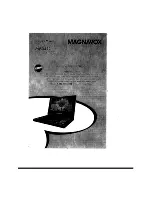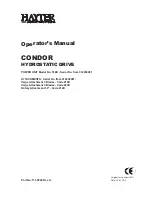
26
UNDERSTANDING REPEATERS
Operation through a repeater, where you transmit on one fre-
quency and receive on another, is called duplex operation. Oper-
ation direct to another station, where you transmit and receive on
the same frequency, is called simplex operation.
A repeater is a station that receives a signal on one frequency
(the input frequency) and then retransmits that signal on a differ-
ent frequency (the output frequency). Repeater antennas are typ-
ically located at the tops of tall buildings or on antenna towers, so
a relatively low-power signal can reach the repeater. The repeat-
er retransmits the signal at a higher power. This gives your trans-
ceiver the ability to communicate over a much greater range.
To use a repeater, you must know the repeater’s input and output
frequencies. Repeaters are usually identified by their output fre-
quency. Thus, a repeater that has an output frequency of 146.94
is referred to as “the 146.942 repeater.” To determine the input
frequency, you must know the frequency offset (typically 600 kHz
for the 2-meter band) and the offset direction (+ if you add 600
kHz to the output, or – if you subtract 600 kHz from the output).
Whether the offset is positive or negative depends on:
• which part of the band the repeater operates on
• local convention
• proximity of repeaters using the same two frequencies
To determine the offset and the direction, obtain a copy of The
ARRL Repeater Handbook (available from your local Ra-
dioShack store or directly from the ARRL) which lists the loca-
tions of repeaters as well as their frequency and offset
information.
A
+
above the displayed frequency indicates a positive offset,
while a – above the frequency indicates a negative offset. If nei-
ther
+
n
or – appears, the HTX-200 is set for simplex operation.
19-1102RPO.fm Page 26 Friday, June 25, 1999 11:17 AM
Summary of Contents for 19-1102
Page 46: ...46 NOTES...
Page 47: ...47...
















































